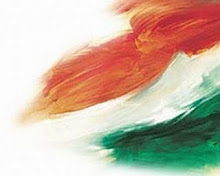India dreams of becoming a superpower by 2020, but quite ironical is the fact that the country whose population has crossed one billion mark, has literacy rates quite comparable with the underdeveloped countries (and in some cases even less than these countries). The literacy rates for male and female (according to 2001 census) stands at 75.85 percent and 54.16 percent respectively. Various programs initiated by the state like Total Literacy Campaign, the District Primary Education Program and National Program of Nutritional Support to Primary Education have done little to attain the goal. Further, the gap between the rural and urban areas and that between female and their male counterpart is quite substantial.
While the male literacy rate in urban areas is about 86 percent, rural female literacy rate is just 46 percent (2001 census). Several plausible reasons explain this difference. The first and foremost of course, is the way the parents perceive the female education. Since the very beginning the role of female is confined to domestic work and looking after children. The tradition of settling at husband’s place after marriage, does not offer enough incentive to parents for spending on girls’ education. A boy’s education is far more important as it enhances the chances of his being employed. Another reason is the prevalent trend of early marriage in rural areas. In most villages, girls’ education, rather than being seen as an incentive is seen as a liability. It is difficult to find a groom for an educated girl.
These are not the only reasons responsible for the low level of female education. Though one cannot deny that gender inequality is, by and large, responsible for the situation, but several other factors also work in this direction. Very often, the parents who are willing to educate their daughters are discouraged by the absence of school within the surrounding area and it is not considered safe to send girls to another village to study. However, this is not true for most of the villages now. But even in villages where there are schools, the standard of infrastructure is abysmally low, be it management of classes, student-teacher ratio, availability of text books, or even furniture, these schools lack in every sense. This discourages the parents to get their children enrolled in these schools. There are incidences of under qualified staff being employed in educational institutions. The meager salaries that are offered by the government do not provide enough incentive to attract the talent to these schools for employment. Grimmer is the condition of scheduled caste female education. The recent figures show that the scheduled caste female literacy rate is dismal 19 percent (2001 census). This shows that the age old discrimination based on caste is still prevalent. This is really disheartening and shows that in spite of numerous schemes being launched by the government, the downtrodden classes still face social stigma and there is a lot to be done for the upliftment of these classes.
However, talking of female literacy, one cannot ignore the achievement of southern states in terms of female education. The states’ performance in terms of social indicators is often proportional to economic growth. But in India’s case rich states like Punjab and Haryana have lower literacy rates as compared to Kerala and Tamil Nadu. Kerala has performed really well since 1990s in fields of health and education, mainly due to the matriarchal pattern of their society. Himachal Pradesh has also managed to do significantly better than other states in relatively shorter span of time. Major credit for this goes to the political action in the state. The success of government’s initiatives often depends on the cooperative action of the community. The illiterate people are often unable to put pressure on the state governments and school authorities, and so, they can easily get away with the blame. Huge amount provided in the budget for expenditure on education does not reach to the grass root level due to the endemic corruption. Thus lack of accountability is often responsible for ramshackle infrastructure of government schools.
Education, under nutrition, and gender discrimination are all interrelated. For example, infant’s health depends on the care taken by mother during pregnancy which in turn depends on her education and also the education in the community. Further, an educated mother is better equipped to help her children in studies. So, there is a need for change in the social attitude of rural people towards women. Also, the standard of government schools’ infrastructure needs to be raised. The salaries of staff should also be raised to make them more committed. Other states should learn from Kerala, Himachal Pradesh and Tamil Nadu so that the goal of achieving universal education does not remain a distant dream.


No comments:
Post a Comment